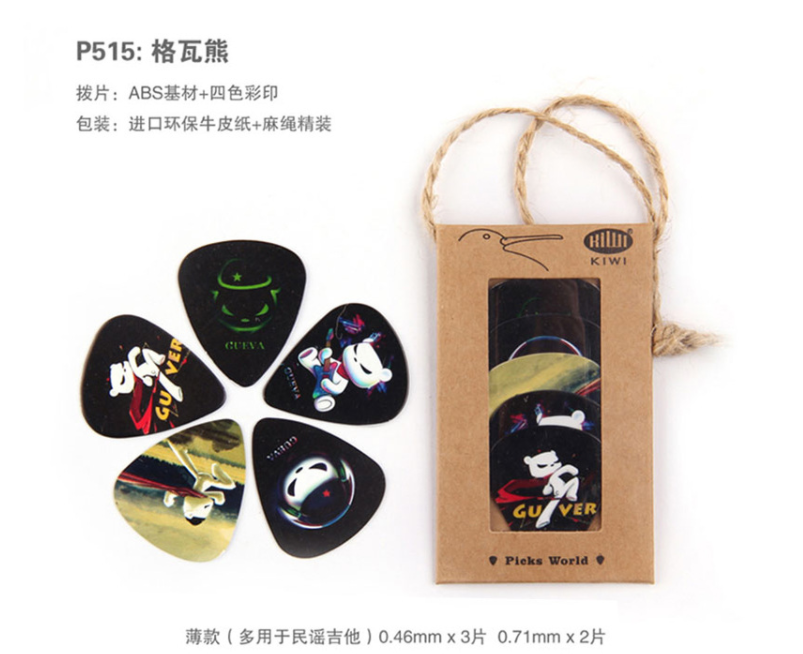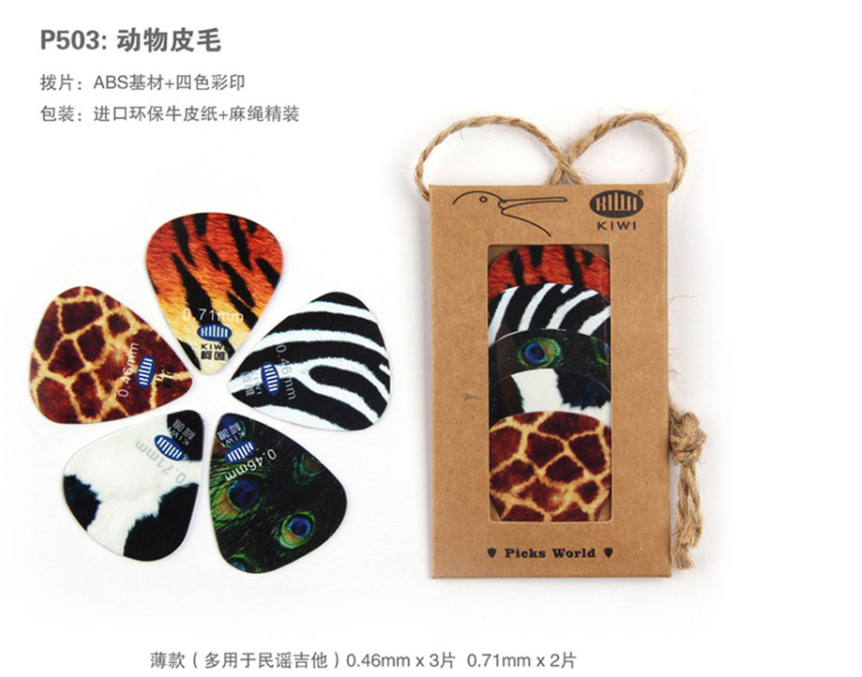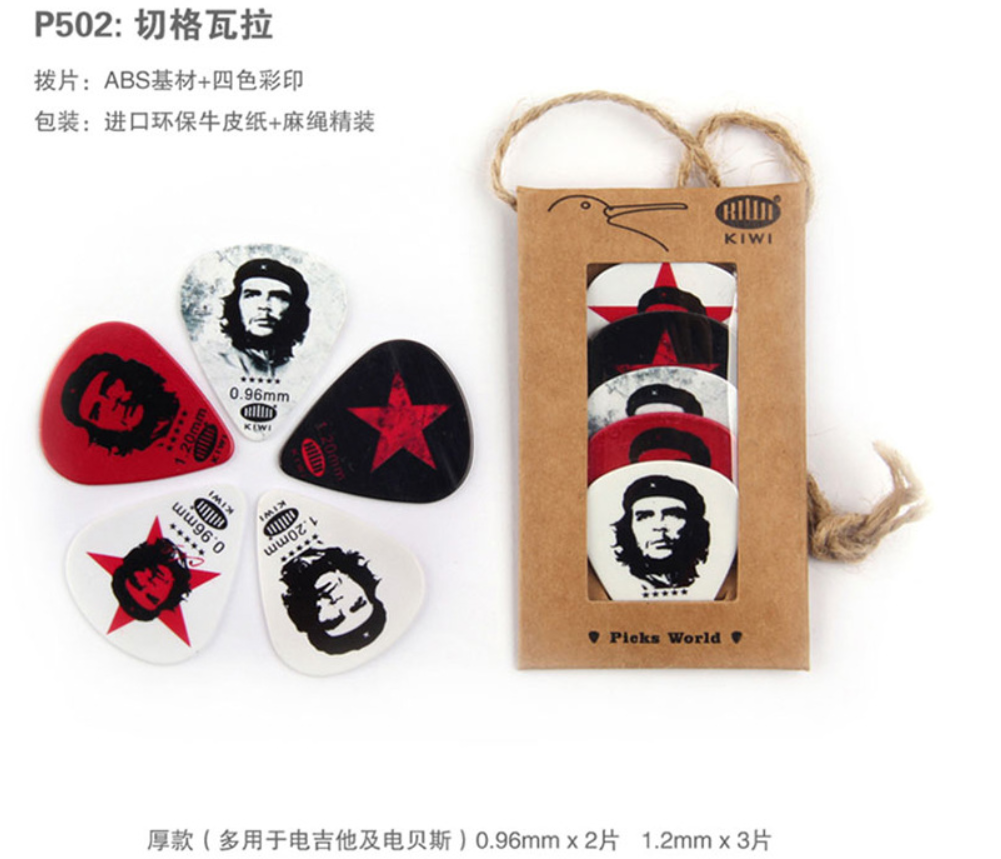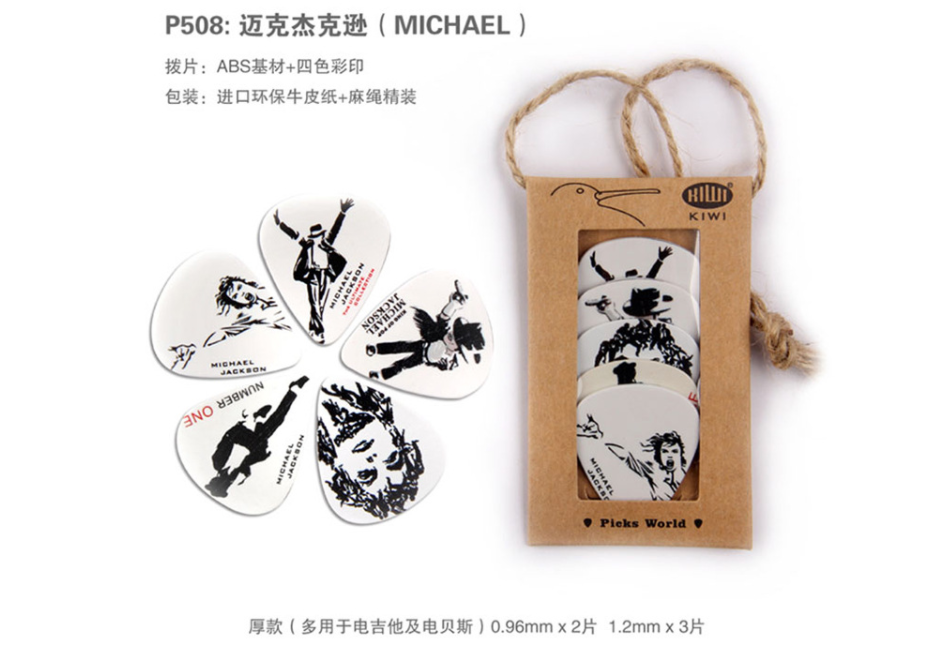What’s pick
A guitar pick is a plectrum used for guitars. Picks are generally made of one uniform material—such as some kind of plastic (nylon, Delrin, celluloid), They are used to strum chords or to sound individual notes on a guitar.
What’s celluloid pick
Historically, this was the first plastic ever used to produce picks,and it is still of some use today, especially for guitarists aiming for vintage tone.

When most people think of a guitar pick, this is what they picture. That’s because these are the most common types of picks out there. Celluloid picks have a bright, crisp attack but they aren’t very durable. They also tend to have a “flappy” sound to them from them being so flexible. Whether that’s a good thing or not is totally up to you.
celluloid was the original alternative to tortoiseshell and was designed to provide a similar feel and tone. Celluloid is more flexible than tortoiseshell but much stiffer than nylon. These picks produce a snappier tone with more high end than nylon.
Guitar Pick Thickness
The thickness of your pick will play the biggest part in how bright or how warm your guitar sounds. As with everything, the different options for guitar pick thickness each have their own pros and cons.
Thin
Your thin picks are usually going to range anywhere from .40 to .60 mm. These will have a lighter sound, naturally, and work best for delicate playing. Thin picks, especially ones made of celluloid, will produce that “flappy” sound that I was talking about earlier. They are great for acoustic strumming and other times where you want that bright and defined rhythm tone that you hear in so many rock and country albums.











Medium
Medium Picks are going to range in thickness from .60 to .80 mm. Medium thickness picks are the most popular choice among guitarists. While they may not provide that same shimmer on acoustic strumming that thin picks do, medium picks still have enough flexibility for good rhythm playing while still retaining the stiffness needed for those leads. They have a nice high-end and mid-range to them without having the boominess of heavier picks. Beginners tend to start here because its a nice middle ground.

Heavy
Picks that are .80 – 1.2 mm are considered heavy. These are going to provide you with the most control when it comes to your playing. Heavy picks will help to clean up your playing, provide less pick noise, and help your solos to become more dynamic. Long story short, If you’re normally playing lead guitar, this is the thickness of pick you’ll want to play.




Extra Heavy
For those players that need an even HEAVIER pick, you should look into extra heavy guitar picks. These are considered 1.2 mm and higher. The players that use these are usually bebop and jazz guitarists looking for a super warm, mellow sound. Our friends at Gravity Guitar Picks make some that go up to 6 mm (thats the about same thickness as three nickels stacked on top of each other). I’m personally not a fan of picks that thick, but if you’ve never tried playing something thats 3 mm or higher, I’d recommend giving it a try!
If you have any interesting, please contact us.
